It’s that time of year when we could all do with an energetic pick-me-up. And your pranayama practice can do just that; filling your body and mind with vibrant energy and warmth.
According to Ayurveda (Yoga’s sister science), the mild months of spring time are heavily weighted towards the Kapha dosha — which means you are more likely to feel tired, lethargic, and might be prone to digestive issues.
This is especially so as the after-effects of winter are still present in us during spring time during the winter months we nourish ourselves with heavier foods and tend to do less exercise. So the ancient wisdom of Ayurveda teaches us to balance this heightened kapha energy by including pita foods and practices — like bhastrika pranayama — in our routine.
Bhastrika pranayama translates from Sanskrit as bellows breath. Essentially, it’s a faster version of the Abdominal Breathing technique which you might be familiar with from an earlier blog post.
That deep, steady, measured breath becomes more rapid — but is still well controlled by your diaphragm — and the depth and speed create heat and dynamic energy.
The Practice
Before you begin working with bhastrika, it’s important to have a grounding in viloma pranayama, as this practice is strong; it requires physical effort, and it’s vital that you’ve developed the awareness needed to recognise when you’re pushing your body too far.
Abdominal breath and viloma pranayama are useful practices to master before you move onto this one.
Although bhastrika is a dynamic form of pranayama, it is subtle, rather than gross. This means that your body shouldn’t be heaving with the breath, and you shouldn’t need to contort your face with effort.
Start in a comfortable seated posture and close your eyes.
Begin working with abdominal breath. If you need a refresher, read through the abdominal breath blog post again.
When you feel present and calm, begin.
Breathe in deeply and slowly through the nose — and then exhale forcefully through the nose, but without strain. At the end of the exhale, breathe in immediately with the same intensity.
As you do this, the abdomen expands with the inhales and quickly contracts with the exhales — you may clearly feel the downward movement of the diaphragm as you inhale, and the upward movement as you exhale.
Practice slowly, remain consciously aware of the movement of your abdomen. This movement should not be jerky or erratic, but just a sensation of rhythmic forcefulness.
Continue with this exaggerated diaphragmatic movement and controlled force of air through the nose for 10 breaths. The breath through the nose can become loud — and flaring the nostrils can help to support this way of breathing, too.
After your 10 breaths, pause for a 30 second break before beginning another round of 10. Each complete inhale-exhale cycle should last for 2 seconds — but if you feel faint, dizzy or nauseas, slow it down.
Practice 5 rounds of 10 breaths, always respecting the 30 second rest between each round. Remember that this is a controlled, steady practice — it shouldn’t feel like you’re hyperventilating.
And revel in the energy that is ignited!
Why Practise Bhastrika?
To understand why this exercise is worth integrating into your regular practice, let’s look at the benefits.
It generates heat and recharges your energy. This intense charging makes you feel alert and makes you want to move your body; it shakes off the lethargy and fires up your motivation.
It stimulates the digestive organs and metabolism. The fast and controlled movement of the diaphragm up and down massages the internal organs and improves overall digestive function.
In Ayurveda, your digestive fire is known as agni — and bhastrika stokes this fire. It also clears out toxins and reduces problems with phlegm, bile and gas — and although this may not sound appealing, it makes you feel much better.
It supports and rebuilds the nervous system and the immune system. By eliminating toxins and speeding up the physical processes that move waste and foreign bodies through your system, as well as clearing and strengthening the lungs, it creates enhanced resistance to colds and sinus infections.
It’s the ideal practice to help you battle those illnesses associated with cooler weather — which are all the more troublesome if you’re already feeling run down.
Are there any reasons not to try this practice?
Yes — unlike the softer and slower pranayama techniques, bhastrika is strong and fast; so there can be risks involved for a very small number of people.
Don’t try it if you have:
High blood pressure
Ulcers or a hernia
Heart disease
Epilepsy
Vertigo
A cold or generally feeling unwell
Or have recently had a stroke.
And if you suffer from anxiety or high blood pressure, always discuss the practice with your doctor before you start. It’s always worth trying bhastrika under the guidance of an experienced teacher to start with.
Wishing you energy, warmth, and bliss!
PS: If you enjoyed this blog click the like button below then share it with those you care for who can also enjoy and benefit from it. 😊

